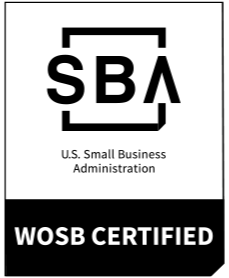Adapting to Remote Work as a C-Suite Leader
We are now intimately familiar with the concept of remote work. Pre-COVID, employers varied in their offerings of remote work—in some cases it was a regular occurrence, a special perk offered as a reward, and at some companies it was solely a contingency. Over the last five years alone, remote work grew 44% in the US job market. We can attribute this rapid growth to several factors including, but not limited to:
-
Growing corporations wishing to cut costs while accommodating their increasing numbers
-
Companies seeking to cast a wider net when searching for talent
-
Expectations of flexibility from millennials and younger generations entering the workforce
Companies that are readily adopting this trend go beyond having the odd person who works from home and have entire teams distributed across various locations. Companies may maintain multiple physical office locations, or companies, such as Emerald One, may be entirely virtual.
Since our infamous invisible enemy arrived, the ability to maintain a more distributed workforce is a critical enabler for companies to sustain themselves and, since March, we’ve seen the remote workforce jump to 62% of US workers. What was an area of curiosity and investigation for many employers is now a necessity. Preliminary studies show that 74% of companies plan to shift permanently to a more distributed model. Why? Let’s look at the facts:
-
Companies report average savings of $11,000 per part-time role converted from physical to virtual
-
65% of employees who work from home report higher productivity due to fewer distractions
-
Companies that utilize remote work experience 25% lower turnover
Distributed teams are the way of the future. Informed C-Suite leaders might be asking themselves, “How can we sustain the benefits without exhausting them?” and “How can I effectively lead my team in this new environment?” In the past, the onus may have been put on the remote workers themselves to stay motivated, productive, and engaged, while in today’s world, it is up to the organization to begin to reinforce their leadership, culture, and trust capabilities to realize the maximum value of distributed work.
So, how can we do this? Let’s break it down.
Leadership
As a leader of a distributed workforce, showing up for your employees may look different than it does in a traditional fixed office space. People crave human contact. This is, of course, more difficult to come by when working remotely. One way to manufacture this kind of contact is to host regular “all-hands” video conferences. Consider and adjust for your workforce’s timezones. Try to ensure everyone will be reasonably able to attend. Your employees will be looking to you for an indication of how the company is doing. Maintain a positive and pragmatic attitude during these meetings. Your goal should be to make everyone, no matter where they are, feel welcome.
Ensure your leaders are trained and equipped to deal with supervising employees in another location. Your supervisors need to understand how to embrace staff for their unique set of skills and capabilities. This requires more time, but adept supervisors can use a few simple tactics to help their remote employees feel seen:
-
Personal daily check-ins, whether verbal or via a collaboration tool;
-
Encouraging and creating the opportunity for team members to forge friendships, and
-
Consistently seeking feedback from team members on potential areas for improvement.
Using chat or project management platforms such as Slack, Google Groups, Asana can make communication between teams accessible and inclusive.
Culture
Laszlo Bock, co-founder & CEO of HUMU, is on a mission to “make work better everywhere.” That mission stems from a long career in which he, like most of us, experienced some not-so-great leadership. In a conversation on the podcast Brilliant in 20, Bock asserts that, in terms of corporate culture, “that gap between what people say they believe and what they [actually] believe is everything,” meaning that leaders often focus on the culture they want, without first understanding the culture they have. Fostering an environment that encourages open communication and honest feedback can help to close the gap. When it comes to obtaining feedback, it is not just about gathering that information, but analyzing and adapting to it. Finding out how your employees are feeling and proactively making changes s a sure-fire way to sustain long-term satisfaction.
Being transparent and consistent in your organizational story and messaging is another crucial factor in keeping your distributed team engaged, as it can be difficult for remote workers to connect with the impact that they are making. Regular reminders regarding the mission of your company and what accomplishments are contributing to the success of that mission can be a big help in boosting engagement, and ultimately productivity.
Trust
For engagement and productivity to flourish, your employees need to trust that you will give them the tools and autonomy necessary to get their work done effectively and efficiently. Rather than scheduling multiple Zoom meetings each day or introducing technology that monitors and measures performance, rely first on trust. Your employees will feel the intrinsic respect of your trust and are more likely to accomplish the company’s mission through commitment rather than obligation.
Anthony Wing Kosner, an editorial strategist at Dropbox, maintains that the “balance between open access to information and protected spaces to workshop ideas is critical for the psychological safety of teams.” Secure, smart workspaces such as OneDrive, GoogleDrive, and Dropbox can provide this open access while fostering autonomy.
Organizations without the leadership or cultural infrastructure to support the human impacts of long-term distributed work may experience higher turnover, higher levels of rework, communication issues, and more frequent organizational conflict.
Emerald One knows that every company is different and comes with its own unique set of challenges. We tailor our Vision Watch programs to identify your organization’s challenges, obstacles, and most significant growth opportunities through our proprietary Elements of Brilliance™ methodology. We help you mitigate those challenges by identifying the best ways to strengthen your employee engagement and contentment levels.
And we don’t just give you a strategy and walk away. We include clear and customized implementation guidance that applies to your company and your culture. Depending upon the level of support you need, we stick with you to ensure you gain maximum value from your investment.
Email us to learn more about how we can help you transform your distributed workforce and unlock your company’s potential.







